Walking the woods or sitting in a high seat anticipating a shot, rifle in hand. Does what you carry matter?
I recently showed a roe buck I had shot on social media and one wag replied ‘You can’t have shot that, you are not wearing head to toe Realtree and carrying a stainless steel rifle with a three grand ‘scope on it’. In these kit obsessed times, we forget that our grandfathers killed deer and did it with much less specialised equipment.
If, like me, you appreciate older things, sporting goods made with care and love and intended to last decades rather than a couple of years, there are practical options outside the scope of the latest Youtube promotional hunting video.
For some, a rifle is a mere tool, efficiency is everything. For others, vintage shotguns and rifles elevate the hunting experience. They have lived a little and carry with them the patina of age and memories of old hunts.
I remember my first fallow deer well. I was perched up a high seat in February, shivering in the dark, awaiting the relief of dawn and the anticipated emergence of deer from the woodland.
I think I remember it as much for the rifle as the deer. It was a home-loaded Mannlicher-Schoenauer 6.5x54 stutzen, made before the First World War. I killed four fallow that morning, from sixty to one hundred and sixty yards. A love of those old rifles has remained with me.
Is this viable today to those so inclined? I think it is and to prove itI had a look for some affordable options.
The first thing I picked up is true classic stalking rifle from the very bottom end of the budget market. A Parker Hale 7x57 built on a Mauser action. It is a model M81 Classic, has a surprisingly well-figured walnut stock, with rubber pad, blacked metal parts and a push-slide safety.
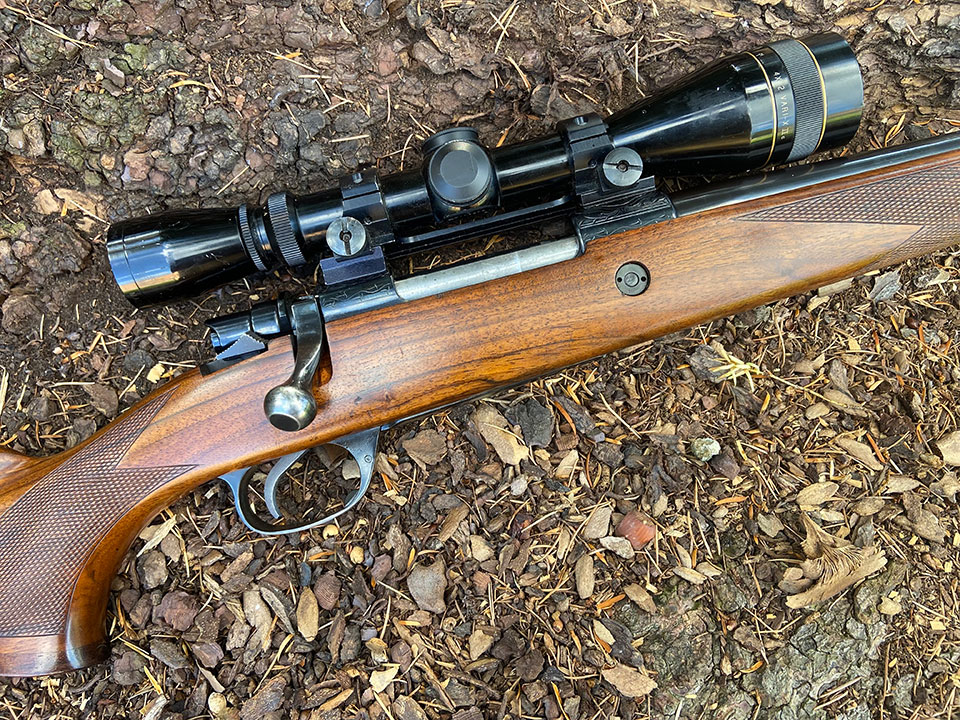
The double square bridge action is fitted with ‘scope mounts, which hold a Leupold 4x12 ‘scope. The 24” barrel is threaded for a moderator and capped.
The Mauser action was made in Spain and has a four-round magazine, a shotgun-style safety rather than traditional Mauser flag safe and a slightly swept back bolt handle.
Lifting it to the shoulder reminded me of days in the field with my T.T. Proctor or on the hill with a Rigby Highland Stalker. I recall dropping a blessbuck in South Africa and the trigger pull at the end of a red stag stalk on Blair Athol. In both cases, the traditional rifle felt right and transported me back in time, where it was just me, the elements and a rifle made from natural materials by the hands of craftsmen.
The Parker Hale M81 classic, introduced in 1986, was their best looking traditional rifle, very much in the style of pre-war stalking rifles, with the modern fashion for palm swell and a slightly-flared pistol grip with a rose-wood cap. In 1995 it sold for around £600 ($900 in the US).
I paid £140 for mine in a provincial auction and it appears very little used. The hand-cut chequer is perfect and the blacking unmarked, the oil-finished stock is still clean and attractive. Overall impression is of a handsome, traditional /British stalking rifle. From ten yards it is hard to tell from my £6,800, T.T.Proctor custom Mauser.
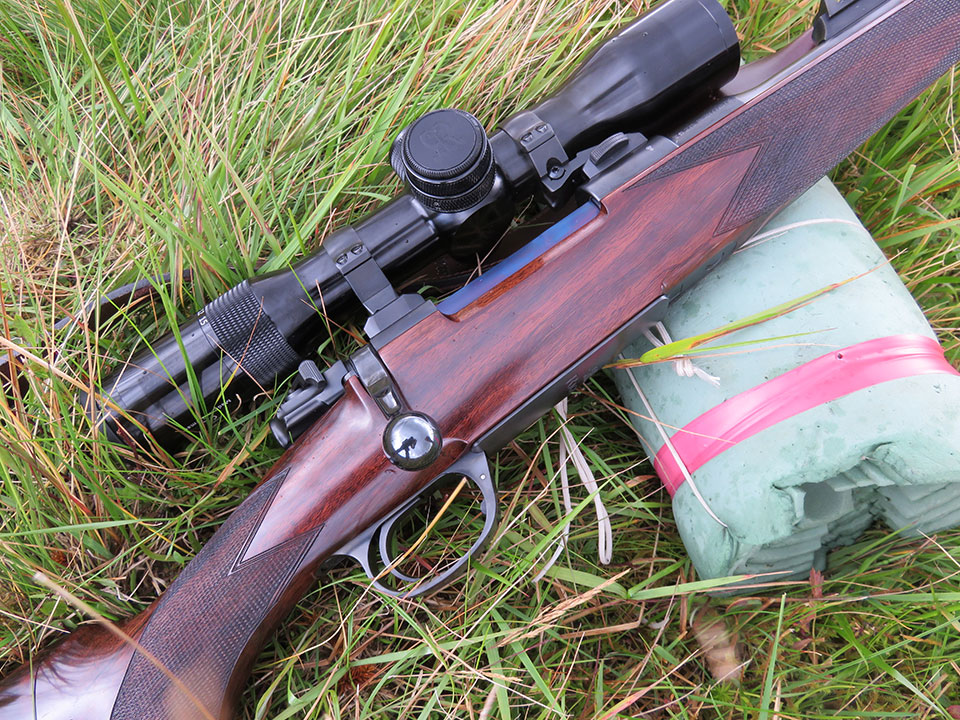
In fact, a little gun-smithing could make it into a passable copy of a Rigby Highland Stalker, for modest outlay.
This would include stripping all the parts, filing and finishing some of the rougher details to a higher standard, replacing the stock retaining pins with flush-fit, engraved versions, re-shaping the pistol grip and re-oil finishing. However, the M81 is a functional and attractive rifle as it stands.
The second of my choices is a true vintage, being sold around 1915 and chambered for a cartridge now difficult to find in commercial loads. It is a Mannlicher-Schoenauer 6.5x54. The same rifle with which I killed my first fallow all those years ago.
Two versions of this were sold as the M1903: a ‘stutzen’, full-stocked style and a half-stocked take-down one, which this is. I actually bought four of them recently, ranging in price from £200 to £500. We can use the £350 example here, as, like the Parker Hale, it arrived already fitted with a ‘scope and mounts.
The M1903 is a happy pairing of Ferdinand Mannlicher’s patent bolt-action, which is beautifully smooth and reliable, with Otto Schoenauer’s elegantly-simple rotary magazine, which holds five cartridges.
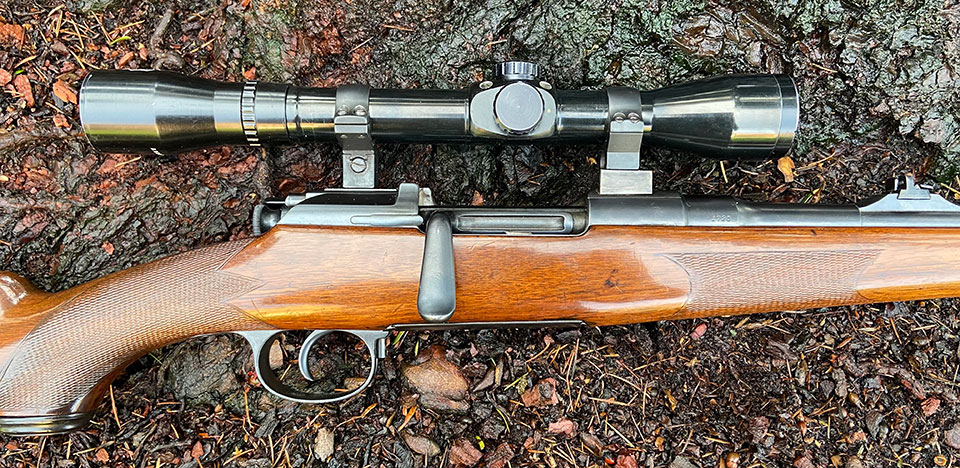
This one was retailed by John Rigby. It has after-market mounts and a Swarovski Habicht ‘scope with a three-post sight picture, well suited to woodland stalking and fairly fast target acquisition. It also has a pop-up peep sight and retains its iron leaf sights, set at 100 and 200 yards.
One of the nice features of this model is the easy-dismantling system it has. Remove the bolt, spin out the magazine floor plate, drop out the magazine, then pull out the forward retaining pin and the entire 22” barrel and action lifts clear of the stock, reducing the length of the rifle, when cased, to just 30”.
The 6.5x54 MS cartridge with its distinctive, long, pencil-like bullet, with a small, blue nose, is old-fashioned looking but proved its worth long ago.
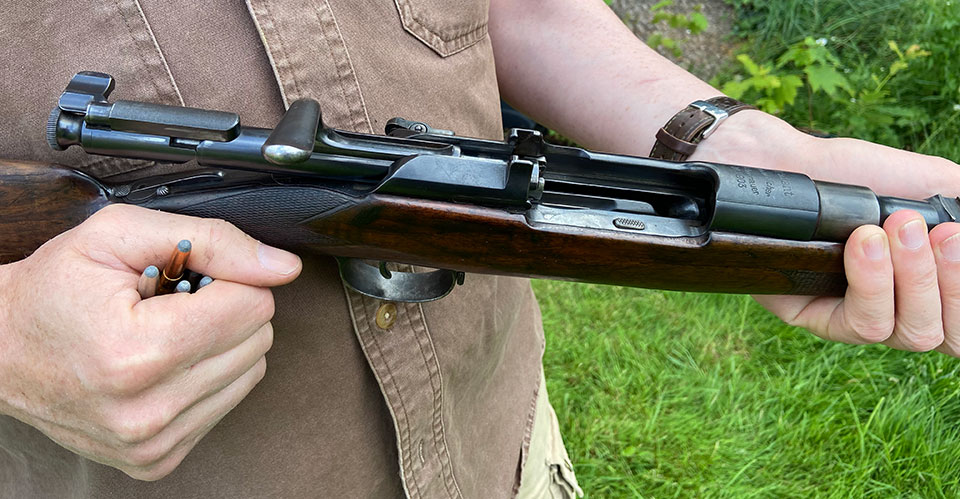
It was popular as a medium game rifle in Africa and some even favoured it for lion shooting; Blayney Percival wrote that he personally shot around forty with his. These rifles sold for around £13.00 just before the First World War.
The 6.5 and 7x57’s unlikely, but successful, adoption for elephant shooting in the hands of men like W.D.M. Bell relied on impressive powers of penetration and the sectional density of the bullets.
My 7x57 has always been a winner in my eyes, belly crawling after roe bucks in Dumfries and shooting prone, feeling that reassuring but unintimidating recoil hit the shoulder and watching the buck lurch as the bullet strikes, confidence is the overwhelming sensation. It was unfashionable for years but Rigby revived it with their new rifles and once again it is appreciated by many.
It is somewhat ironic that the current Deer Act was penned to exclude the 6.5 MS for the shooting of red and fallow deer, as it failed to meet the muzzle energy standard set for that purpose with factory ammunition.
Fortunately, careful hand-loading allows those who wish to take large deer with it to do so legally, by pushing up the muzzle velocity a fraction. Kynamco in England, also sell deer-legal loadings for the 6.5 MS.
The 6.5, if zeroed at 200 yards, will put a 140 grain bullet 2.3” high at 100 yards and 12” low at 300 yards. The 7x57 loaded with a 140 grain bullet, zeroed at 200 yards is a little flatter; shooting 1 1/2” high at 100 yards and 7” low at 300 yards.
For deer, I rarely take shots at more than 200 yards, most of them falling within 150 yards, so either rifle is very well suited to my kind of stalking.
My 6.5 has after-market mounts and a Swarovski Habicht ‘scope with a three-post sight picture, well suited to woodland stalking and fairly fast target acquisition. It also has a pop-up peep sight and retains its iron leaf sights, set at 100 and 200 yards.
Andrew Venables, of WMS has a similar one and remarked “My 1906 M.S 6.5 shoots 160 grain bullets to point of aim out to 500 yards with the five flip-up sights fitted.”
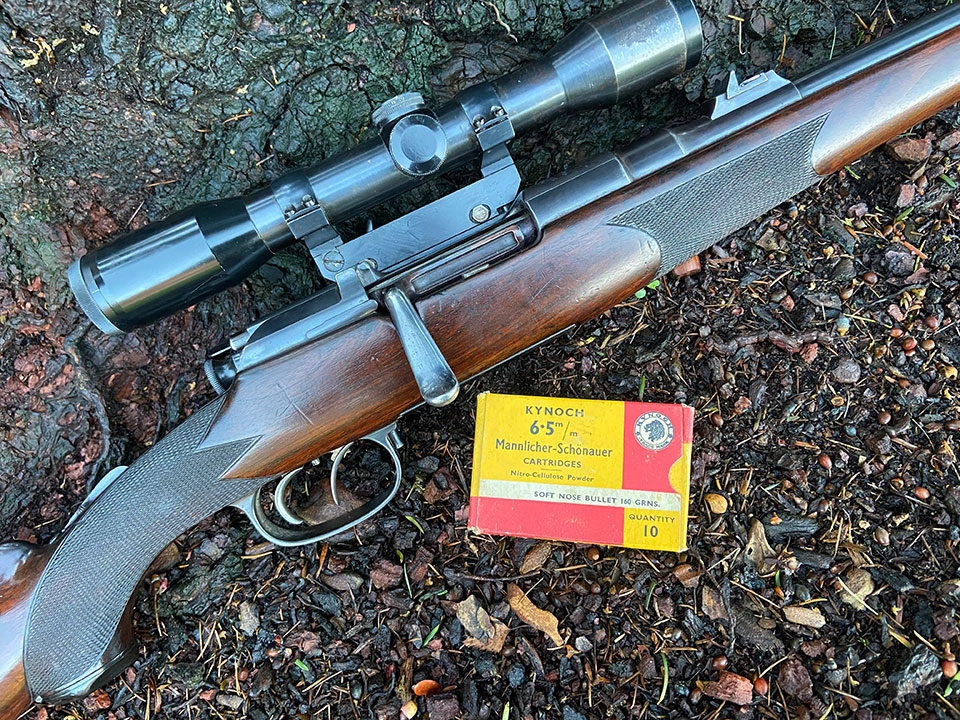
In terms of quality, the Mannlicher-Schoenauer wins hands-down. They were expensive to make and expensive to buy when new. The Parker Hale is clearly a lower-budget rifle but puts a very capable, traditional rifle in your hands for very little outlay. The owner of my Leominster gun shop was given one as young man and still swears by his. Another local stalker told me he too learned to shoot deer with a M81. “Brilliant rifle, very accurate and totally dependable”, he recalled.
They may not have the technical sophistication of modern offerings and their early 20th century cartridges may not have the super-flat, long range accuracy of the short magnum du-jour but these old classics are well proven, soft-shooting, bag fillers with the history to prove it.
As with any stalking set-up, the most important thing is preparation and familiarity with your rifle and cartridge combination. Once you know that and shoot within its (and your) capabilities, you will find you have a life-long hunting companion that will be a lot of fun to make memories with.
Published by Vintage Guns Ltd on (modified )




